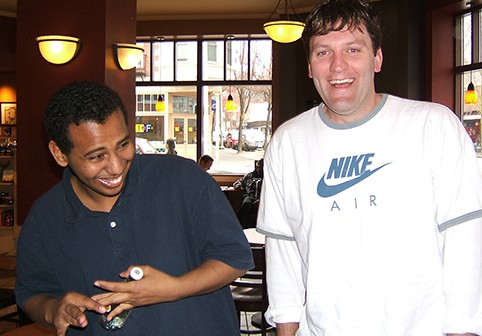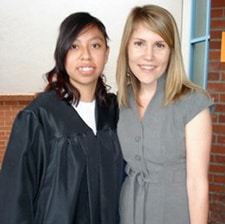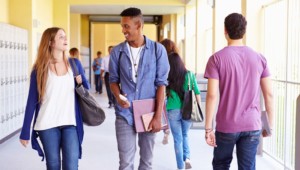8 Noncognitive Competencies for College and Career Readiness

In 2008, I was in my third year of a four year commitment to teach a group of 17 high school students (the group subsequently graduated in June 2010). That year had been challenging for me. My school was relatively new and served a disproportionate number of students with difficult school histories. We had yet to graduate our first cohort of students, and I worried whether our non-traditional approach, built around interest-based projects, internships, and strong adult relationships, was preparing our students for life after high school.
One student was kicked out for selling drugs, another was removed from her home because of abuse. One student had a baby, another student had gotten his girlfriend pregnant. I regularly talked to them about not drinking and driving or getting in a car with anyone who did, and asked them to call me if they were ever in that situation. One time, one student did call, and I went to pick her up from a party. Later that year, one of another was in the car with a drunk driver. The student did not die but the driver did.
I was hoping students would go on to college, and also was wondering if some would make it to their senior year.
On a cold rainy night that December, I heard William Sedlacek, a researcher and counselor at the University of Maryland, speak at a Big Picture Learning (BPL) Principal dinner. In the early 2000s, Sedlacek partnered with the Gates Millenium Scholars Program (GMSP) to study what attributes were predictors of college degree attainment for students of color. (Slightly less than half of students who start college don’t finish, so the GMSP wanted to figure out why some students stayed in college while others dropped out).
Through his research, Sedlacek found eight attributes, or noncognitive competencies (NCCs), that were higher predictors of success in college than either GPAs or SAT/ACT scores.
In addition to forming the basis of the GMSP application, these competencies are also used by colleges for admissions, for scholarship programs and applications, and in high schools such as the BPL network of schools. I also co-wrote a guidebook for BPL titled The Role of Noncognitive Skills for Student Success (published in 2014).
The 8 noncognitive competencies are:
- Positive Self-Concept
- Realistic Self-Appraisal
- Skills at Navigating Systems and Understanding and Dealing with Discrimination
- Preference for Long-Range Goals over Short-Term or Immediate Needs
- Availability of a Strong Support Person
- Successful Leadership Experience
- Demonstrated Community Service and Involvement
- Knowledge Acquired in or about a Field
After I heard Sedlacek speak, I felt more hopeful about my students’ successes and their college readiness. The school was non-traditional and my students were doing some great work. Most of them had internships in the community, they were learning in fields they cared about, and they had mentors, adults in the community who cared about them. Many of the students were also school leaders. We had a robust set of identity-based clubs such as the Mixed Poly Club and the Latino Club. Those who weren’t in typical leadership positions were still valued as leaders. Many of the 11th graders were mentors for younger students. Some of the students were involved in restorative justice, helping staff, students and families with much more complex discipline situations that would have led to suspensions at other schools. Our students were genuinely involved in creating the school community and it showed.

Many of my students were also beginning to take down the walls that they had built to protect their insecurities about themselves as learners. During the student-led exhibitions I heard students say that they knew what their strengths were and what they needed to work on academically, and then I saw them act on those strengths and work toward growth in areas of struggle. This led to tears, frustration, and sometimes learning epiphanies that were joyful to witness. For some, being at our school was the first time they actually had an accurate sense of their own abilities. This also meant that students could see that their abilities and intelligence weren’t fixed. They learned that if they worked hard, it paid off.
When I heard Sedlacek speak, it was as if he was also speaking to my students. Fortunately I had two students with me, Shytwan and Amelia. Shytwan had previously interned at the Starbucks corporate headquarters and he was there to speak to the group of 70+ educators. Amelia and Shytwan became my ambassadors for talking with the rest of the class about the NCCs.
Entire schools can (and should) be designed with the NCCs in mind, since they are strong predictors of success in college and career, and especially for students of color. If we want to close the achievement gap, addressing the noncognitive competencies can help create more equitable education institutions. Given the NCCs’ strong predictiveness of success in college and career, we need school leaders who are incorporating these competencies into secondary programs and measuring them. Simply measuring test scores is not enough, since we know these competencies matter for college and career success.
I like to think of the NCCs as conditions. They are malleable and dependent on our environment. We can help students grow them. We can model them (in fact, modeling them is one of the best ways to encourage their growth; young people watch and learn so much from adults).
We can design schools that help students build and foster these conditions.
Does your school:
- Encourage students to get out of the building to learn about fields of interest?
- Help students cultivate meaningful leadership experiences AND validate leadership experiences they already have?
- Support students in having meaningful experiences that help them cultivate skills related to interests in the real world?
- Encourage adults to come into the building for mentorships?
- Encourage students to seek out strong adult mentors outside of school?
- Help students talk about their strengths AND their struggles without fear or judgement?
- Provide opportunities for students to regularly set short and long term goals related to their own personal visions?
- Help students navigate systems and help them recognize sometimes those systems are unfair, unjust, and stacked against them?
- Teach students not to self-bully but instead to build a positive self-concept based on a realistic sense of one’s own strengths and struggles?
Schools designed to cultivate noncognitive competencies are helping all students prepare for success in college, career and life. This is the kind of school I still want to work in, and this is the kind of school I want my own children to attend.
For more, check out:







Andrew Frishman
Bonnie, thank you THANK YOU for sharing this. Great to hear about the ways in which your students benefited from attention to these noncognitive competencies. I makes me think of the longitudinal study work that we are engaged in at Big Picture Learning to examine the ways in which these play out in students' lives after they graduate and become full fledged adult citizens. Soon there will be additional research papers published, but in the mean time, we have some preliminary (and VERY promising) data regarding how incorporating these design elements into school has powerful results - www.bigpicture.org/2013/05/big-picture-learning-high-school-alumni-report/
Enrique Gonzalez
I was at that presentation long ago. We had begun the exact work at Frida Kahlo HS in LAUSD in 2005. It's beautiful to hear it also became your focus. I'm retired now but Midas those days...